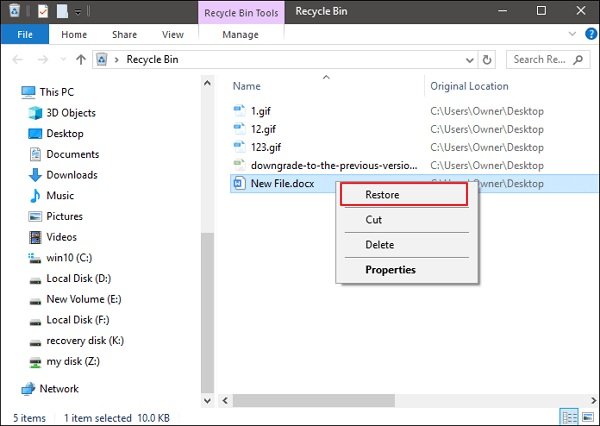UbiqFile is a popular cloud storage service that allows users to store and share files easily. However, losing access to your UbiqFile account or important files can be frustrating, whether due to a forgotten password, a hacked account, or accidentally deleted files. This guide will walk you through the steps how to recover ubiqfile account, covering a variety of scenarios. From password recovery to restoring deleted files, we have you covered.
1. What is UbiqFile?
UbiqFile is an online storage platform that provides users with a way to store, upload, and share files with others. The service is popular for sharing large files, including documents, images, videos, and software. One of the key features of how to recover ubiqfile is that it provides both free and premium options, giving users flexibility in terms of storage space and download speeds.
However, like any cloud service, users may encounter difficulties accessing their accounts or files. Whether you’ve forgotten your password or lost files, understanding how to recover your account and data is essential for safeguarding your content.
2. Common Reasons for Losing Access to UbiqFile
Before diving into recovery methods, it’s important to identify some of the most common reasons users lose access to their UbiqFile accounts:
2.1 Forgotten Password
Perhaps the most common reason for account access issues is a forgotten password. If you can’t recall your password or login credentials, you won’t be able to access your account.
2.2 Hacked or Compromised Account
If your UbiqFile account has been hacked or compromised, you may find yourself locked out or notice suspicious activity within the account.
2.3 Deleted Files
Files can be accidentally deleted or lost due to a system error or user mistake. UbiqFile offers methods to recover deleted files within a certain time frame, but if not addressed promptly, they may be permanently lost.
2.4 Email Address Issues
If the email address linked to your UbiqFile account is inaccessible (e.g., you’ve lost access to that email), it could prevent you from recovering your password or resetting your account credentials.
2.5 Payment Issues (for Premium Users)
For premium users, missing a payment or having a declined payment method could result in restricted access to premium features, including larger storage capacity.
3. How to Recover a Forgotten UbiqFile Password
3.1 Using the Password Reset Feature
If you’ve forgotten your password, UbiqFile provides a straightforward way to reset it:
- Visit the UbiqFile Login Page: Navigate to the official UbiqFile website and click on the “Forgot Password” link under the login form.
- Enter Your Email Address: You’ll be prompted to enter the email address associated with your account.
- Check Your Email: UbiqFile will send you an email with a link to reset your password. Be sure to check your spam folder if the email doesn’t appear in your inbox.
- Reset Your Password: Click the link in the email and follow the instructions to create a new password.
- Login with Your New Password: Once your password is reset, you can log back into your UbiqFile account using the new credentials.
3.2 What If You Don’t Receive the Password Reset Email?
Sometimes, the reset email may not come through, or you may no longer have access to the email account linked to UbiqFile. In such cases:
- Check Spam/Junk Folders: Make sure the email isn’t sitting in a spam folder.
- Ensure You’re Using the Correct Email: Verify that the email address you’re entering is the one linked to your UbiqFile account.
- Contact UbiqFile Support: If you still can’t receive the email, contacting support may be necessary (covered in section 6).
4. Recovering a Hacked UbiqFile Account
4.1 Signs of a Compromised Account
If your UbiqFile account has been hacked, you might notice:
- Unfamiliar files uploaded or deleted.
- Changes to your account settings.
- A password reset request you didn’t initiate.
4.2 Immediate Steps to Take
If you suspect your account has been compromised, take these steps as soon as possible:
- Reset Your Password Immediately: Go to the UbiqFile login page and request a password reset. If you can’t access your account, you may need to contact UbiqFile support.
- Check for Linked Emails: Review your account settings to ensure no unfamiliar emails or phone numbers are linked to your account.
- Contact Support: If you’ve been locked out or the hacker has changed your credentials, you’ll need to contact UbiqFile support to recover access (covered in section 6).
5. Restoring Deleted Files from UbiqFile
5.1 File Deletion Overview
Accidentally deleted files are a common issue. UbiqFile generally retains deleted files for a limited time, making it possible to recover them within a certain window.
5.2 Steps to Restore Deleted Files
- Login to Your UbiqFile Account: Use your existing credentials to access your account.
- Go to the Trash/Deleted Files Folder: Many cloud storage platforms, including UbiqFile, have a trash or deleted files folder where deleted files are temporarily stored.
- Locate Your Deleted Files: Search for the files you wish to restore in the trash folder.
- Restore the Files: Select the files and choose the “Restore” option to move them back to your main storage.
5.3 Recovering Permanently Deleted Files
If your files have been permanently deleted (i.e., they are no longer in the trash folder), recovery may be difficult. At this point, contacting UbiqFile support would be your best option, though there’s no guarantee of recovery.
6. How to Contact UbiqFile Support
If you’ve tried the recovery steps and still cannot access your account or files, contacting UbiqFile support is the next step.
6.1 How to Reach UbiqFile Support
- Visit the UbiqFile Support Page: Go to the official UbiqFile website and navigate to the “Support” or “Contact Us” section.
- Submit a Support Request: Fill out the support form with details about your issue. Be sure to include any relevant account information, such as your email address and any error messages you’ve encountered.
- Wait for a Response: Support requests can take some time to process, so be patient while waiting for a response. In some cases, response times may vary depending on the nature of your issue and your account type (free or premium).
7. Using Backup Services with UbiqFile
To avoid losing files in the future, it’s wise to back up important files stored in UbiqFile to a secondary service.
7.1 Why Use a Backup Service?
Cloud storage services can experience outages, accidental deletions, or hacking incidents. Having a backup ensures your files are safe even if something goes wrong.
7.2 Best Backup Practices
- Automated Backups: Use automated backup tools that periodically save a copy of your UbiqFile data to another cloud service or external hard drive.
- Redundancy: Maintain multiple copies of important files across different platforms.
- Monitor Files Regularly: Check your backup systems to ensure they are working correctly and capturing all updates to your files.
8. Preventing Future Loss of Access
To minimize the chances of losing access to your UbiqFile account or files in the future, follow these tips:
8.1 Use Strong, Unique Passwords
Create strong passwords that combine letters, numbers, and special characters. Avoid using the same password for multiple accounts.
8.2 Enable Two-Factor Authentication (2FA)
If UbiqFile offers two-factor authentication, enable it for an added layer of security.
8.3 Regularly Update Your Email Address
Ensure that the email address linked to your account is one you actively use and have access to. Update it promptly if you switch to a new email provider.
9. Conclusion
How to recover ubiqfile account or files can be a simple process if you follow the correct steps. Whether you’ve forgotten your password, had your account hacked, or accidentally deleted important files, UbiqFile provides several recovery methods to help you regain control. By being proactive with strong passwords, backups, and regular account maintenance, you can prevent future issues and ensure your data stays safe. If all else fails, contacting UbiqFile support is the best way to resolve persistent issues.


